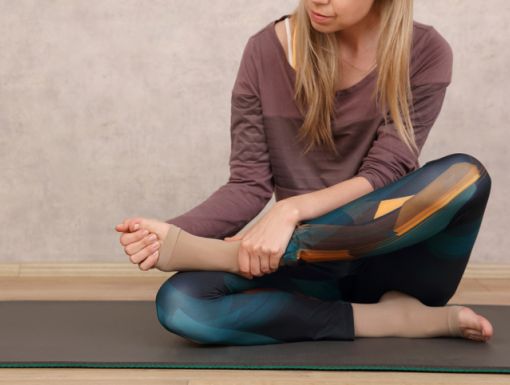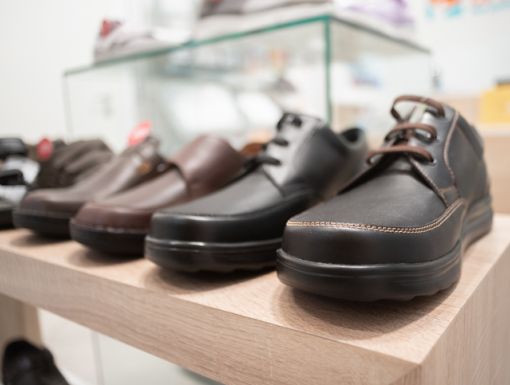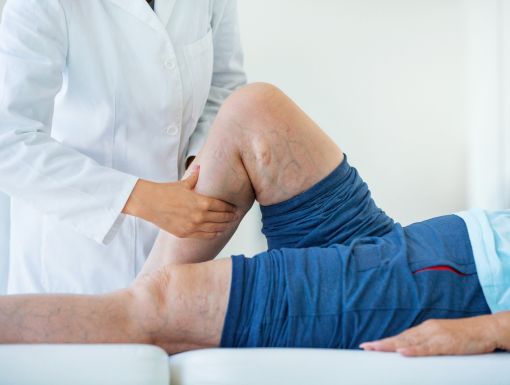
Who Should Wear Compression Socks?
Compression socks are a wardrobe staple for athletes, older adults, women who are pregnant and frequent flyers, but many people aren’t aware of their benefits. Who else should wear compression socks? In short: everyone! Most people can benefit from wearing compression socks – even with light or mild compression – to help manage swelling or soothe tired legs.
How do compression socks work?
Compression socks work by improving the circulation of blood through your feet and legs. The elasticity in the socks gently squeezes your legs, providing compression that helps blood flow up and down the leg rather than pooling at your extremities, which is what causes swelling. This swelling is known as edema.
In addition to helping circulate blood to prevent edema, the socks can also help with lymphatic circulation. The lymphatic system is the part of your circulatory system responsible for transporting white blood cells and maintaining the body’s fluid levels. Like they do with blood, compression socks can also ensure your lymphatic fluids are flowing. When this lymph fluid accumulates it, too, can cause swelling; this is known as lymphedema.
It may seem scary, but edema is common and can happen to anyone. To help combat the issue, Ochsner Therapy and Wellness has launched a specialty lymphedema therapy program to treat people who suffer from this kind of swelling. Our experts have weighed in below on how compression socks can help.
Who can benefit?
With a few exceptions, there is typically no harm in wearing light compression socks daily, but it is always a good idea to speak with your doctor before starting a new health routine. If you have peripheral arterial disease, ischemia, diabetes or congestive heart failure, do not use compression stockings without consulting your doctor; wearing compression socks with these health diagnoses can be dangerous. People with impaired feeling due to nerve damage may be advised against using compression as it can further affect the limited skin sensation. Those with skin infection, dermatitis and fragile skin may also not be candidates. Please work with your trusted health care provider to determine whether compression is right for you.
Compression socks can be a great tool if you are experiencing any of the following:
- Recent surgery or bed rest, as inactivity increases your risk of deep vein thrombosis.
- Long flights or long-distance travel, as inactivity and tight space restrictions can decrease blood flow and heighten the risk of swelling.
- Long- or short-term immobility, as seated positions increase pressure on veins in your legs.
- Clotting disorders, as they carry an added risk for deep vein thrombosis.
- Varicose veins, as they can impact or restrict blood flow.
- Pregnancy, as the body naturally produces and retains more fluid to support the baby’s growth.
- Pain or swelling after athletic exercise, as lactic acid that is released during workouts can build up in your body and cause pain.
- Achy, swollen or heavy feeling legs and feet, as these can be signs of edema.
While compression socks can’t cure these conditions or eliminate the risk of swelling, they can help to reduce symptoms and soothe the aching and discomfort that often accompany them. Regular usage may also reduce the risk of developing deep vein thrombosis, which is a type of blood clot.
What kind of compression is right for me?
Compression socks come in a variety of styles, but keep in mind the main considerations: type of compression, level of compression and length. Let’s dive deeper.
Type of compression
- Uniform: These socks, as the name suggests, apply equal levels of pressure across the entire length of the garment. Uniform compression provides tissue pressure, activates the leg muscle pump, supports skin elasticity and encourages blood to flow upward from your ankles through the veins in your legs and back toward your heart.
- Graduated: This type of compression sock applies more pressure around the ankle with gradually decreasing levels of compression up the length of the leg. Graduated compression helps fight the forces of gravity, offering more pressure closer to your feet where fluids are more likely to pool.
Level of compression
Level of compression is measured and indicated by the term “mmHg” which stands for millimeters of mercury. This is the same unit of measurement used to read your blood pressure.
- Mild pressure: Anything labeled less than 15 mmHg is considered light compression. This level of compression is best suited to those who are using compression socks to combat fatigue with little to no edema.
- Moderate pressure: Typically considered 15-20 mmHg, this mid-range compression can benefit people who have minor swelling in their legs or who are at risk for developing deep vein thrombosis.
- High pressure: Socks with 20-30 mmHg of pressure are typically recommended for those with moderate edema, lymphedema, varicose veins, venous reflux or more severe swelling.
- Medical-grade pressure:
- Socks with 20-30 mmHg of pressure are typically recommended for those with moderate edema, lymphedema, varicose veins, venous reflux or more severe swelling. You may be able to find this level of compression over the counter or with a doctor’s prescription at a durable medical equipment provider.
- Socks with 30-40 mmHg or higher are often used in moderate to severe cases of edema and lymphedema. For these levels of compression you will likely need a prescription from your doctor; consult with a durable medical equipment provider for fitting and to consider insurance coverage,
Length
Lastly, you may want to take length into consideration. Compression options can be found in knee-highs, thigh-highs and full-length pantyhose or leggings. Knee-high socks are typically easier to apply and to tolerate, making them a good place to start if you’re new to compression.
Keep these three factors of type, level and length of compression in mind when choosing the best option for you. Most compression socks can be purchased at your local pharmacy, online or at Ochsner’s Total Health Solutions. If you’re still stumped, your doctor can help make a recommendation.
Wearing your compression socks
Often, the biggest challenge with compression socks is getting them on. Get some extra grip by wearing rubber gloves to pull them on and prep the skin for smooth application with a bit of powder. If you have mobility issues or cannot reach your feet, consider using an assistive device.
Well-fitting compression should not roll down, feel too tight or painful or cause swelling. Socks should lay smoothly against your skin and remain in place while you go about your regular activities.
Compression socks can be worn daily, but keep in mind they are not recommended for sleep, as your legs have fewer stressors while you are lying down and your body is relatively still.
Whether you regularly experience swollen feet or you’re an athlete with achy legs, it can’t hurt to consider compression. Compression socks are a low-risk and low-cost opportunity to improve your health. Give them a try!
If you need additional support, schedule a consultation with our therapy team at 504-842-4348.



